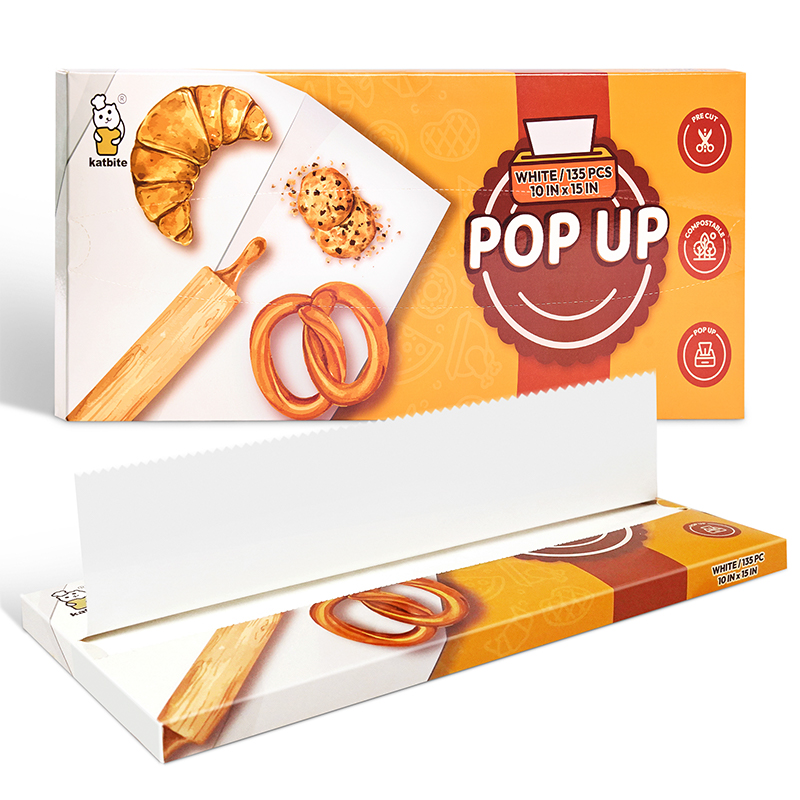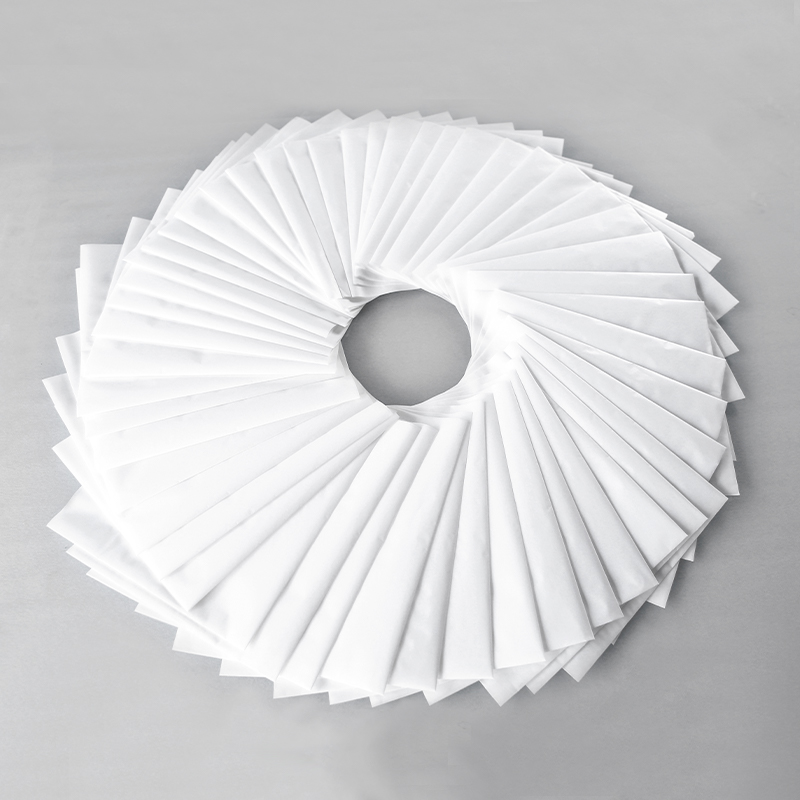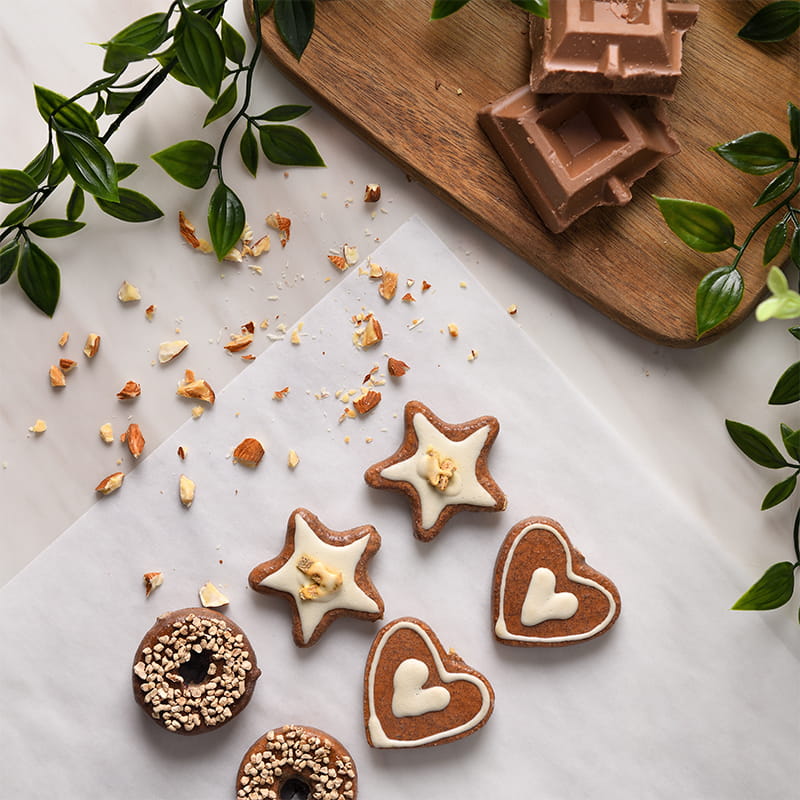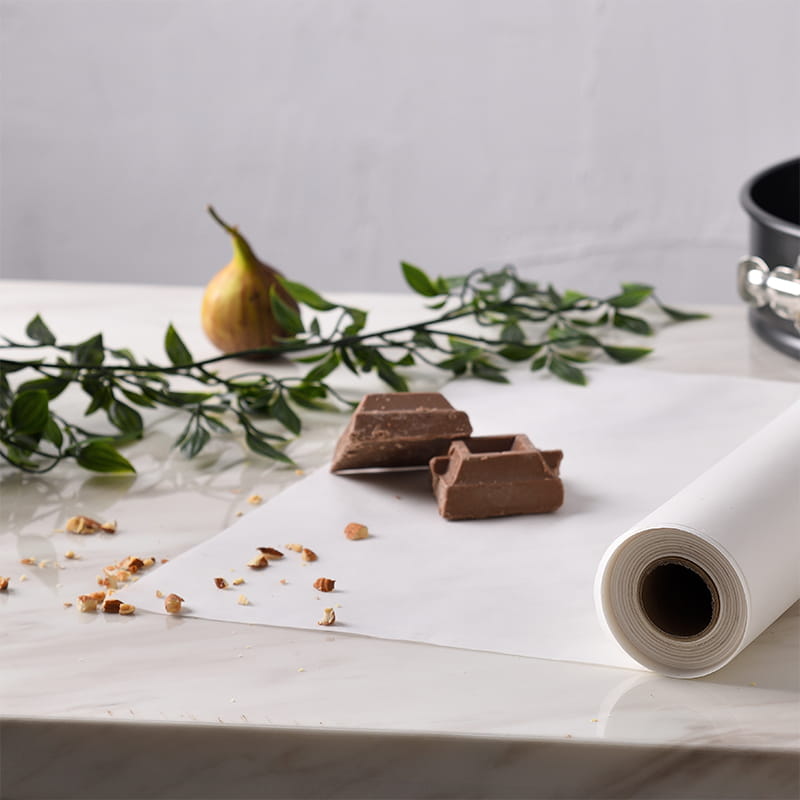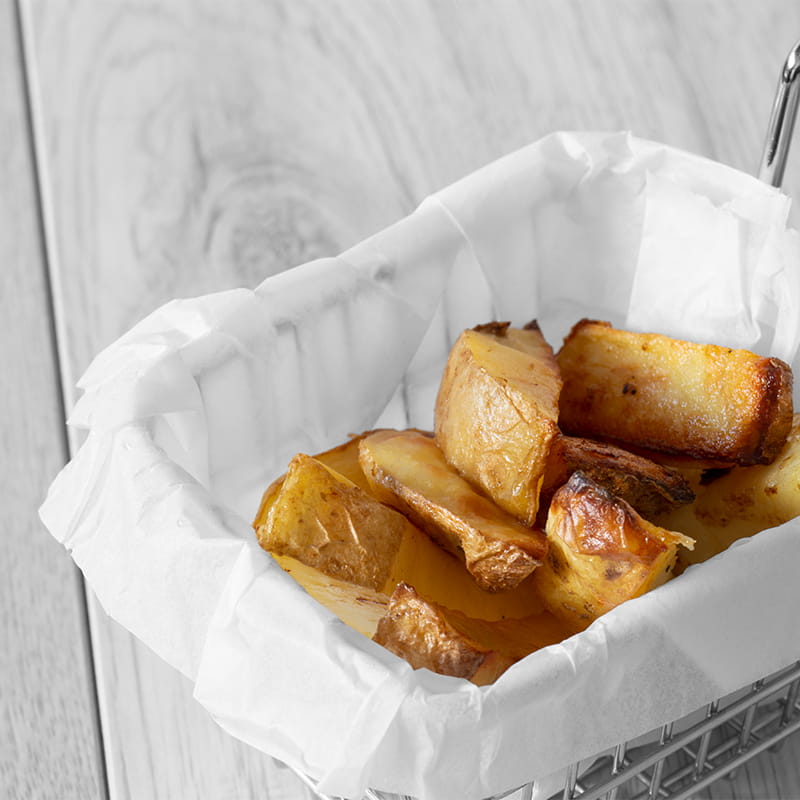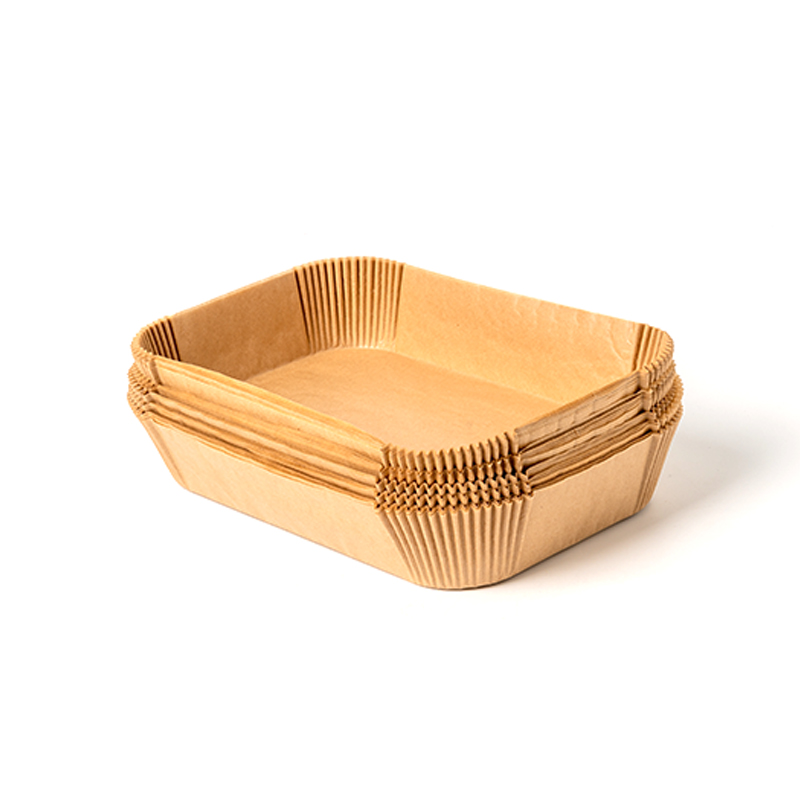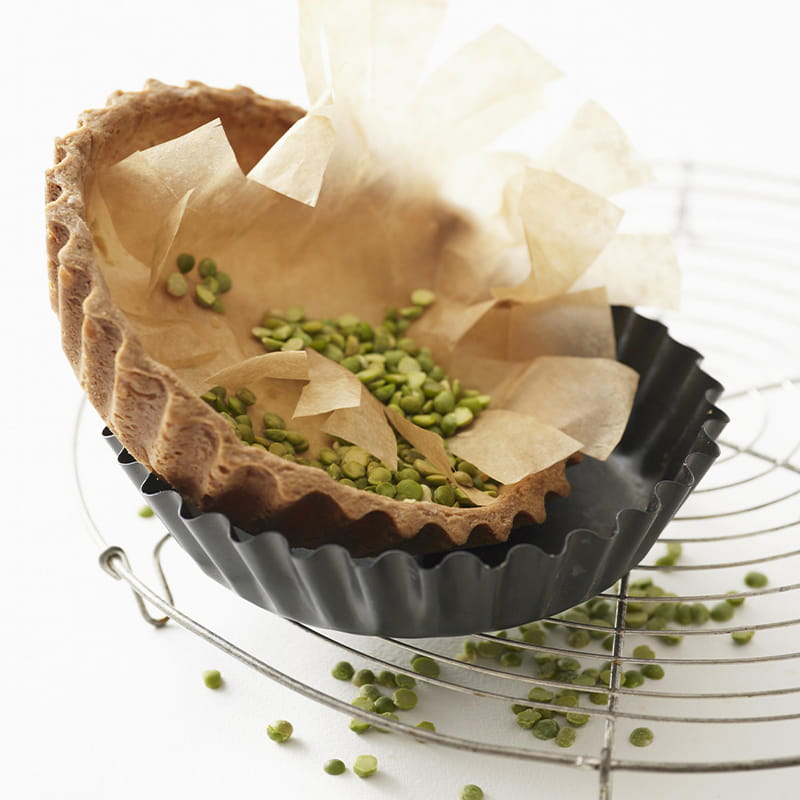Product details: Pop-up parchment paper sheets, an environment-friendly product, are composed of wood pulp and are double-side coated with silicone. Such a coating makes our paper smooth, greasepr...
See DetailsHow to understand and utilize Guanghe's baking paper
In the symphony of baking trays, mixing bowls, and sizzling pans, one humble kitchen staple often plays a crucial, behind-the-scenes role: parchment paper. More than just a convenience, it subtly elevates cooking experiences by tackling common frustrations like sticking, burning, and arduous cleanup. But what exactly is this paper, why does it deserve a place in your drawer, and how can you make the better choices regarding its use? Let's explore the multifaceted world of parchment paper.
Beyond Plain Paper: The Science Behind the Surface
Parchment paper begins its life similar to many other papers, derived from wood pulp. However, its journey diverges significantly through a specialized treatment process. This involves an acid treatment, which fundamentally alters the cellulose structure of the paper fibers. This transformation is key – it imbues the paper with inherent strength and creates a base resistant to grease and moisture.
The next critical step is the application of a thin, food-grade silicone coating. This layer is the source of parchment paper's renowned non-stick properties and its ability to withstand the heat of ovens and stovetops. Silicone, a stable synthetic polymer, contributes significantly to the paper's heat resistance without imparting unwanted flavors or odors to food. The result is a unique material: strong, heat-tolerant, non-stick, and resistant to both grease and water.
Why Reach for Parchment? The Compelling Benefits
The popularity of parchment paper isn't accidental; it stems from tangible advantages that enhance both the cooking process and the final results:
1.Effortless Release & Consistent Results: The primary reason more cooks embrace parchment is its reliable non-stick surface. Batters and doughs lift cleanly, delicate fish fillets don't tear, roasted vegetables caramelize without welding themselves to the pan, and cookies slide off perfectly with golden-brown, intact bottoms. This predictability is invaluable for consistent baking and cooking outcomes.
2.Simplifying Cleanup: Lining a baking sheet or pan with parchment creates a protective barrier. Spills, drips, melted cheese, caramelized sugars, and stubborn baked-on residues stay largely on the paper, not the pan. When done, simply lift out the parchment and discard it – often leaving the pan remarkably clean or requiring only a quick rinse. This saves significant time and effort, especially after preparing sticky or messy dishes.
3.Heat Tolerance for Versatility: Unlike its cousin wax paper, which melts under heat, parchment paper is designed for oven use. Its silicone coating allows it to perform reliably in standard baking and roasting scenarios encountered in home kitchens. This makes it suitable for a wide range of temperatures used for cookies, cakes, vegetables, fish, and even some breads.
4.Promoting Even Cooking & Browning: While not a direct insulator like some materials, parchment paper creates a slight barrier that can help promote more even heat distribution and prevent hot spots from causing excessive browning or burning on the bottom of foods. It also helps trap a small amount of steam, particularly when used to cover dishes or create packets, aiding in gentle cooking and moisture retention.
5.Versatility Beyond Baking: Its uses extend far beyond cookie sheets. Parchment is ideal for lining cake pans for easy layer removal, creating individual cooking packets ("en papillote") for fish and vegetables, providing a non-stick surface for candy making or chocolate work, separating layers of dough or cookies in the freezer, covering dishes to prevent splatters during stovetop simmering, and even providing a clean surface for tasks like kneading dough or decorating cakes.
When Does Parchment Paper Shine? Key Applications
Understanding its strengths makes it easier to decide when parchment paper is the better choice:
Baking Cookies & Bars: Ensures easy removal and consistent browning without sticking. Essential for delicate shortbread or sticky bars.
Preparing Cakes & Breads: Lining cake pans guarantees intact layers. Useful under loaf breads to prevent sticking in the pan.
Roasting Vegetables: Prevents sticking and caramelization directly on the pan, making cleanup easy while allowing veggies to roast beautifully.
Cooking Fish & Poultry: Excellent for creating sealed parchment packets that steam food gently and infuse flavors, or simply lining a tray for easy roasting.
Working with Sticky Doughs & Candies: Provides an essential non-stick surface for rolling out pie crust, puff pastry, or marshmallows, and for setting candies or chocolate.
Reheating & Freezing: Place between items like burgers or pancakes before freezing to prevent sticking. Use on trays to reheat foods like pizza or fries in the oven for crispier results than microwave reheating.
General Kitchen Tasks: Use as a disposable piping bag tip, a makeshift funnel, or a protective cover for countertops during messy projects.
Choosing Wisely: Navigating Parchment Paper Options
While generally straightforward, a few considerations can guide your selection:
Bleached vs. Unbleached: Bleached parchment paper is white and undergoes a process to achieve its color. Unbleached parchment retains a natural brown hue and avoids the bleaching process. Both are considered safe for food contact and perform similarly in terms of non-stick properties and heat tolerance. The choice often comes down to personal preference regarding chemical processing or aesthetics.
Thickness & Quality: Parchment paper comes in varying thicknesses or densities. Thicker papers often feel more substantial, resist tearing when manipulating wet batters or heavy items, and provide slightly better insulation. Thinner papers might be adequate for simple tasks like lining a pan for cookies but could tear more easily in demanding applications.
Pre-cut Sheets vs. Rolls: Pre-cut sheets offer convenience, fitting standard baking sheet sizes perfectly. Rolls provide versatility, allowing you to cut pieces to fit any pan or baking dish, wrap foods, or create custom-sized pieces for various tasks.
Intended Use: Consider your primary needs. If baking large batches of cookies regularly, pre-cut sheets or a sturdy roll might be ideal. If you frequently make parchment packets or line irregular pans, a roll offers more flexibility.
Parchment Paper vs. Common Alternatives
|
Feature |
Parchment Paper |
Wax Paper |
Silicone Baking Mat |
Cooking Spray/Oil |
Aluminum Foil |
|
Non-Stick |
Excellent |
Good (Cold Only) |
Excellent |
Variable (Can burn) |
Poor (Food often sticks) |
|
Heat Safety |
Oven Safe (Standard temps) |
Melts in Oven |
Oven Safe (High temps) |
Can burn/smoke |
Oven Safe (High temps) |
|
Cleanup |
Extremely Easy |
Easy (Cold) |
Easy (Washable) |
Can be messy, greasy |
Moderate (Can stick) |
|
Browning |
Promotes even browning |
N/A (Not oven safe) |
Promotes even browning |
Promotes browning |
Can cause uneven browning |
|
Versatility |
High (Baking, packets, etc.) |
Low (Wrapping, cold prep) |
Medium (Baking sheets) |
Low (Pan greasing) |
High (Wrapping, covering) |
|
Reusability |
Single-Use |
Single-Use (Cold) |
Reusable |
Single-Use per appl. |
Sometimes reusable |
|
Cost |
Low per use |
Low |
Higher upfront |
Low |
Low |
Addressing Safety: A Common Concern
Given it comes into direct contact with food during heating, questions about the safety of parchment paper are understandable. Based on its typical composition (wood pulp cellulose treated for strength and coated with food-grade silicone) and extensive use:
Non-Toxicity: Reputable parchment paper manufacturers produce products intended to be food-safe. The silicone coating used is generally considered inert and stable at typical cooking temperatures, meaning it shouldn't leach harmful chemicals into food.
Heat Resistance: As noted earlier, parchment paper is specifically designed for oven use. While it will eventually brown and char if exposed to excessive heat (like direct flame or very high broiler settings) or for prolonged periods beyond its intended range, it performs reliably within standard cooking and baking temperature guidelines. It should not melt like wax paper.
Bleaching Process: Concerns sometimes arise about the bleaching process used for white parchment. Reputable manufacturers use processes that aim to leave minimal residues. For those preferring to avoid bleached products, unbleached parchment is a readily available alternative, offering the same core functionality with a natural brown color.
While generally considered safe by food safety authorities when used correctly, it's always prudent to avoid exposing parchment paper to direct flames or using it under a broiler where it could ignite or char excessively. If paper becomes overly brown, brittle, or shows signs of scorching during use, it's advisable to discard it.
Understanding Limitations
Parchment paper is a valuable tool, but it's not universal:
Not for Direct High-Heat Exposure: Avoid direct contact with open flames (like on a grill) or intense broiler elements, as it can ignite or char significantly.
Not Indestructible: While strong when wet, it can tear if handled roughly, especially when laden with heavy or wet foods. Extremely sharp utensils can pierce it.
Not Reusable: Parchment paper is designed for single use. Reusing it compromises its non-stick properties and increases the risk of tearing and potential charring.
Not a Complete Insulator: It offers minimal insulation compared to materials like silicone mats. Don't expect it to drastically alter cooking times or prevent browning entirely.
Conclusion: An Essential Partner in the Kitchen
Parchment paper transcends being a mere convenience item. Its unique combination of non-stick performance, heat tolerance, and grease resistance addresses fundamental challenges in baking and cooking, causing to better results and significantly easier cleanup. From ensuring perfectly released cookies to enabling hassle-free roasting and facilitating elegant en papillote dishes, its versatility is undeniable.
Understanding its composition demystifies its properties, while knowledge of its ideal applications and limitations allows for informed and effective use. When selecting parchment paper, considering factors like bleached vs. unbleached preferences and sheet thickness can enhance your experience. Addressing safety concerns reasonably reinforces that, when used appropriately, it is a reliable and safe kitchen partner.
For anyone who bakes regularly, enjoys roasting vegetables, or simply appreciates minimizing post-cooking scrubbing, parchment paper proves itself to be a consistently valuable, multifaceted tool. It’s a simple innovation that reliably makes kitchen tasks smoother and outcomes more successful.click https://www.guanghepaper.com/product/baking-parchment-paper-sheets/ to reading more information.


 English
English 中文简体
中文简体